iFi has added to its range of portable DAC/headphone amps with an all-new design, the hip-dac.
Smartly dressed in petrol blue with a touch of copper, the go-anywhere hip-dac is designed to slip discreetly into a pocket and offers an extensive hi-res specification at an affordable £149 price tag. The hip-dac replaces the inferior DAC (Digital-to-Analogue Convertor) and amp circuitry in smartphones,tablets, PCs and Macs to improve headphone sound.
Digital Stage
The DAC section is based around a Burr-Brown DAC chip that iFi uses extensively in its products, selected for its fluid, highly ‘musical’ sound quality and True Native architecture. This, combined with custom iFi circuitry, enables the hip-dac to deliver sound quality across all manner of digital audio formats, including bit-perfect PCM, native DSD, and MQA – the hi-res streaming codec, as used by Tidal’s ‘Masters’ tier.
Hi-res PCM and DXD audio data is supported at sampling rates up to 384kHz, alongside DSD from 2.8MHz to 12.4MHz (DSD64, 128 and 256). Thanks to the Burr-Brown chip’s True Native design, PCM and DSD take separate pathways – this enables both PCM and DSD to remain ‘bit-perfect’ in their native form right through to analogue conversion, which is not the case with most other DAC/headphone amps.
Either side of the rotary volume control reside a pair of LEDs that change colour to indicate the format and sampling rate of the digital audio being played. Extensive clock-locking eradicates jitter (digital distortion), using iFi’s GMT femto-precision clocking system to maintain the integrity of the digital signal until conversion to analogue.
Another circuit feature that separates this and iFi’s other DACs from competing designs is the XMOS chip, which processes audio data received at the USB input and is programmed in-house. Rather than relying on firmware supplied off-the-shelf, which is not typically optimised for audiophile-grade sound, iFi programs its own bespoke firmware to enhance audio processing.
iFi’s continuous software development allows features to be added or optimised via firmware updates, enabling the hip-dac to be tailored to the user’s playback priorities and ensuring it stays cutting-edge over time. Users can even download and install different versions of iFi firmware to experiment with different digital filters if they wish.
Analogue Stage
The hip-dac’s amp circuitry is of balanced (differential) design. Balanced audio circuits have long been championed by renowned highend audio electronics engineer John Curl, now a technical consultant for iFi, given their ability to reduce noise within the signal path. Curl has worked closely with iFi’s in-house technical team, led by Thorsten Loesch, to produce an analogue stage of exceptional quality for a device of this kind. The circuitry incorporates a range of high-quality components carefully selected for their performance in an audio context, including a custom iFi OV op-amp, TDK C0G class 1 ceramic capacitors, a precision low-noise power supply IC from Texas Instruments and a high-quality analogue volume pot (many portable DAC/headphone amps use inferior digital volume controls).
The headphone amp has a nominal power rating of 400mW and is capable of delivering over 700mW from the balanced output, depending on the impedance of the attached headphones. The amp stage features switchable gain, which iFi terms PowerMatch. This matches the level of drive to the load presented by the headphones, by adjusting input sensitivity and thereby signal strength. With high-sensitivity headphone types such as in-ear monitors, leave PowerMatch at its lower setting for ultra-low-noise performance. But if your headphones require more drive – most on/over-ear types, for example – press the PowerMatch button on the front panel to increase gain.
XBass
XBass is another user-selectable feature – a sophisticated form of ‘bass boost’ that enhances low frequencies without muddying the midrange, particularly useful with earphones and open-back headphones that may lack deep bass. It operates entirely in the analogue domain rather than messing with the digital signal via DSP and may be switched in or out of the signal path.
Get Connected
The hip-dac’s USB input handles audio data up to 32-bit/384kHz and supports the ‘SuperSpeed’ USB 3.0 standard, as well as USB 2.0 for backwards compatibility. It is asynchronous, meaning that the data rate is regulated solely by the hip-dac’s specialised audio clock circuitry for accurate, jitter-free data transfer from the source device.
There are two USB ports – Type A for audio data and USB-C for charging. Unusually, the Type A input features a ‘male’ connector, rather than a typical ‘female’ port. This arrangement provides greater mechanical integrity than the USB/Micro USB ports commonly found on DAC/headphone amps from other manufacturers. It also offers an advantage to iPhone and iPad users, because it accepts Apple’s Lightning to USB Camera Adaptor directly without requiring an additional female-to-male USB adaptor. (The Camera Adapter is required to connect Apple iOS devices to third-party USB devices.)
Two outputs are provided – a 3.5mm socket for headphones with a single-ended cable/connector, and a Pentaconn 4.4mm output enabling headphones equipped with balanced connectivity to take full advantage of the hip-dac’s differential amp design. In addition, the 3.5mm output benefits from iFi’s proprietary S-Balanced circuitry, cutting crosstalk and related distortion in half when used with regular, single-ended headphone connections.
Price & Availability
The hip-dac’s 2200mAh battery lasts for around eight to 12 hours of playing time, depending on volume level and how power-hungry the connected headphones are. It comes bundled with three USB cables: a USB-C OTG (On-The-Go) cable, ideal for connecting Android devices and PCs/Macs with USB-C ports; a USB Type A cable; and a Type A to USB-C charging cable. (The Camera Adapter required to connect Apple iOS devices is purchased separately.)
With its petrol blue, 102x70x14mm, extruded aluminium enclosure, the hip-dac is available from February at an RRP of £149 and will be showcased at CanJam NYC 2020.














































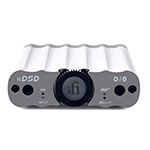















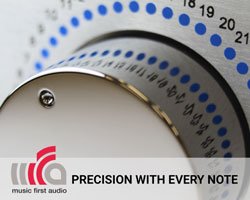
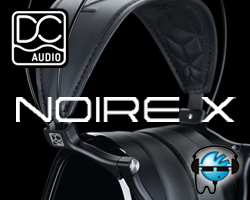
















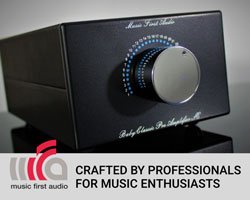







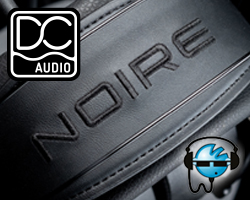













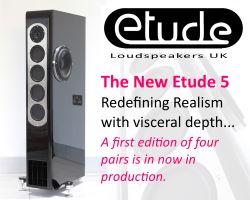
































































You must be logged in to leave a reply.